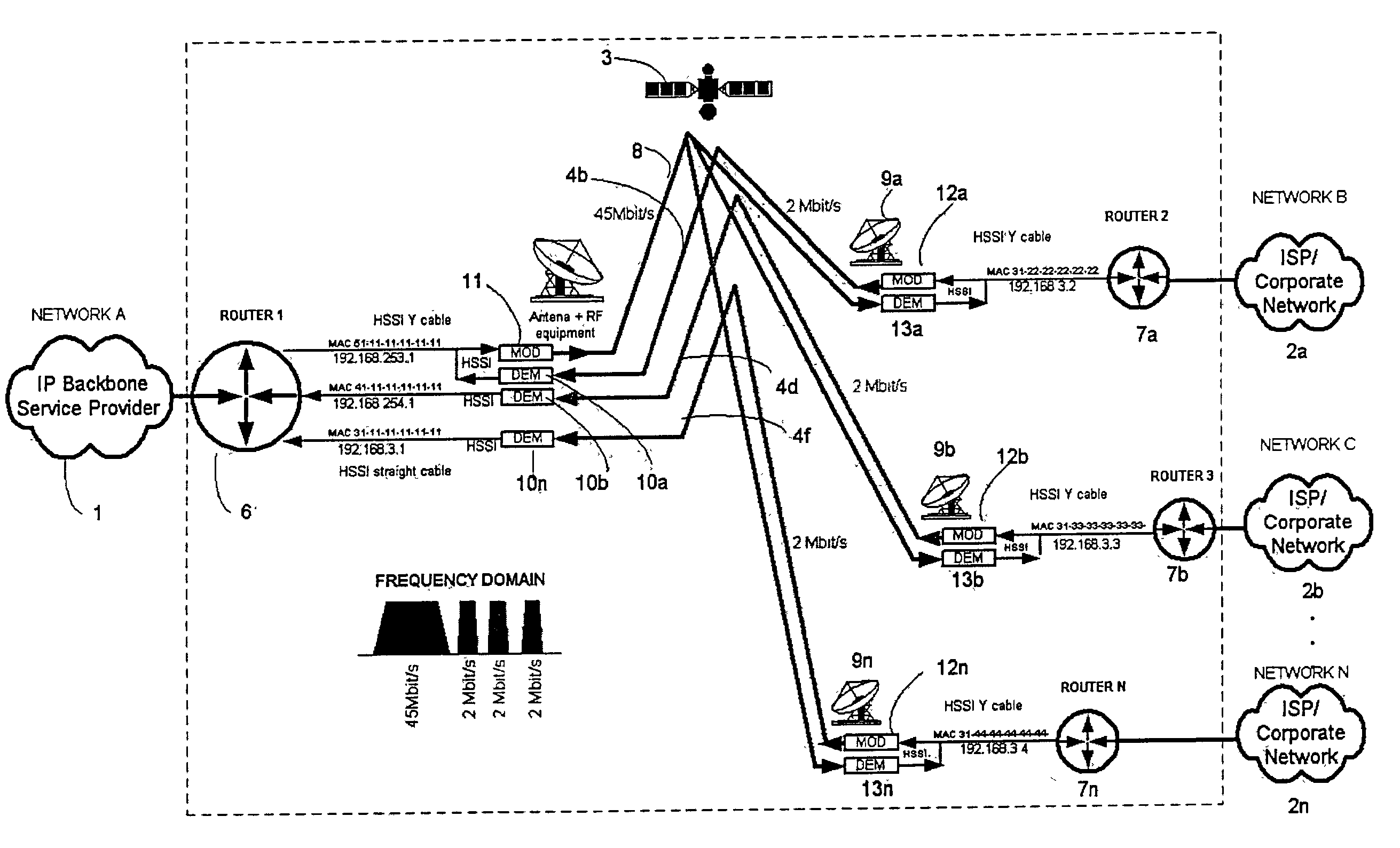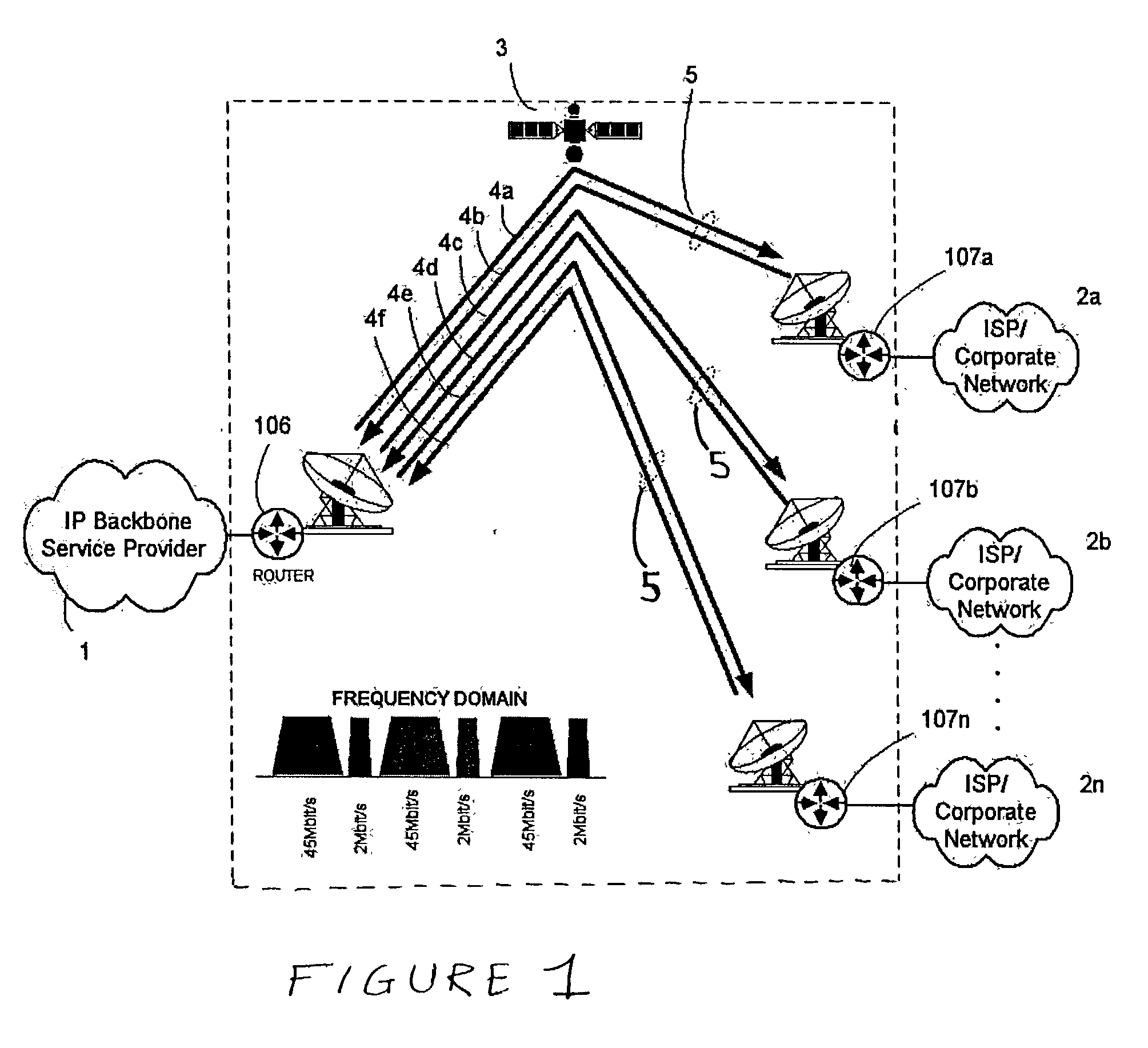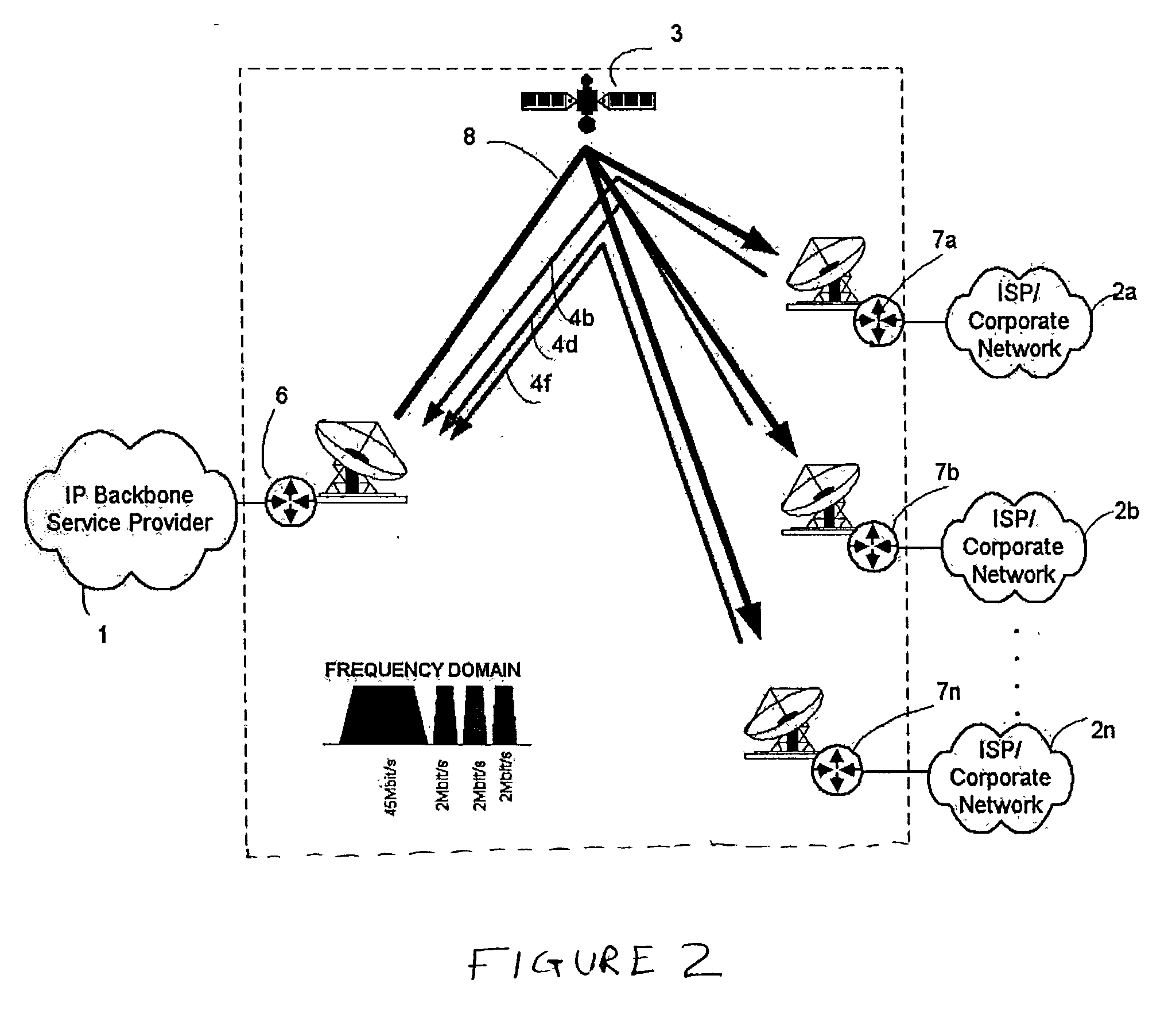Satellite internet communication system and method
a communication system and satellite internet technology, applied in the field of satellite internet communication system and method, can solve the problems of increasing operating complexity, wasting more transponder power and bandwidth than a shared high speed carrier, and scpc carrier use is not hardware efficient, so as to achieve cost-effective and scalable solutions, save satellite capacity and ip statistical multiplexing gains, and effectively utilize static satellite capacity
- Summary
- Abstract
- Description
- Claims
- Application Information
AI Technical Summary
Benefits of technology
Problems solved by technology
Method used
Image
Examples
Embodiment Construction
[0026] Reference will now be made in detail to the exemplary embodiment of the present invention, examples of which are illustrated in the accompanying drawings. In the present invention, the terms are meant to have the definition provided in the specification, and are otherwise not limited by the specification.
[0027] The present invention improves utilization of satellite bandwidth in SCPC-based point-to-multipoint Internet connectivity scenarios by combining and configuring various components in a novel manner, and relying on characteristics of layers 1, 2 and 3 that are present in a satellite based Internet connection. For example, but not by way of limitation, at layer 1 (i.e., physical layer in the Open System Interconnection (OSI) model), transparent satellite links are represented, and at layer 2 (i.e., data link layer), MAC addressing is represented. Further, at layer 3 (i.e., network layer), IP routing is represented. A novel feature of the exemplary embodiment of the prese...
PUM
 Login to View More
Login to View More Abstract
Description
Claims
Application Information
 Login to View More
Login to View More - R&D
- Intellectual Property
- Life Sciences
- Materials
- Tech Scout
- Unparalleled Data Quality
- Higher Quality Content
- 60% Fewer Hallucinations
Browse by: Latest US Patents, China's latest patents, Technical Efficacy Thesaurus, Application Domain, Technology Topic, Popular Technical Reports.
© 2025 PatSnap. All rights reserved.Legal|Privacy policy|Modern Slavery Act Transparency Statement|Sitemap|About US| Contact US: help@patsnap.com



